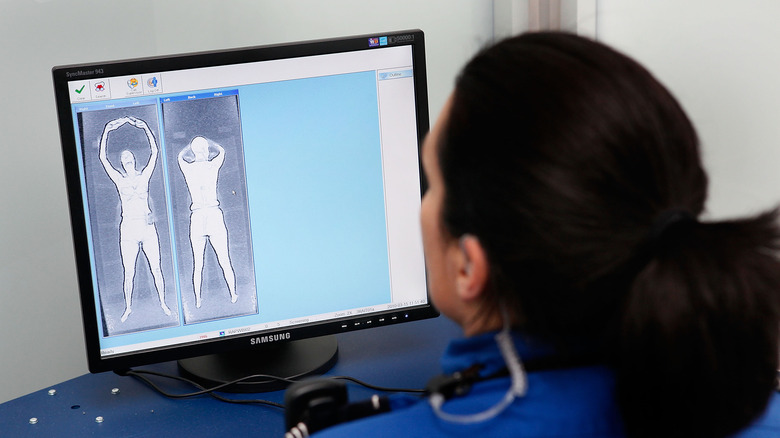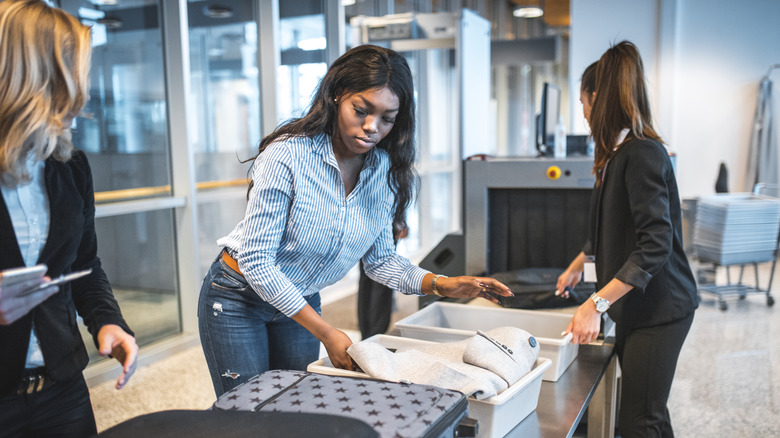What Happens If You Wear A Wig Through TSA's Security Scanner?
Traveling can be stressful, and for those who wear wigs, there might be an added layer of anxiety when approaching airport security. Many people wear hairpieces for various reasons, including hair loss, personal style, or cultural practices. You might be wondering, what's it like going through airport security while wearing one? Or, even more airport anxiety-inducing, do you have to take it off for the TSA agent or security scanner?
First, it's essential to understand what the security scanner does. TSA employs Advanced Imaging Technology (AIT) scanners to detect potential threats and prohibited items on the passenger. These scanners use millimeter wave technology or backscatter X-ray to create a generic outline of a person's body, highlighting areas that might require further inspection. Before the AIT scanner, you will go through a TSA metal detector. Oftentimes, if you pass through the metal detector, you may not need to go through AIT. But, if you cannot go through the metal detector due to medical reasons, you may request AIT screening instead. What's unique about the AIT scanners is that they can detect both metallic and non-metallic objects on the passenger.
However, a 2014 government report states that AIT scanners have a higher false alarm rate when passengers wear wigs. A wig, clip-on extension, topper, weave, or any other kind of hairpiece may cause the AIT scanner to alarm. In fact, any hairpiece that contains metal, like a clip or bobby pin, may cause both the AIT and metal detector to alarm.
TSA's hair screening process
When it comes to wigs, the TSA's stance is accommodating. The organization recognizes the sensitivity and personal nature of hairpieces and wants to ensure that passengers' dignity and privacy are maintained throughout the process. Wearing a wig through a security scanner is allowed, and it should not generally trigger an alarm or require additional screening. Nonetheless, like any other aspect of airport security, there are some nuances to consider.
If the scanner detects an anomaly or if there is something about the hairpiece that requires further inspection, TSA officers may ask to conduct additional screening. This is where communication is key. According to the TSA's statement on hair patdowns, you have certain rights in this process: Inform the TSA officer of your wig, express any concerns you might have about the process, request a screening by a same-sex officer in a private area, ask the officer to use clean gloves, and speak with a supervisor if you feel uncomfortable at any point.
TSA officers are trained to perform pat-downs and they should explain the process before it begins. If a physical inspection of the actual wig is deemed necessary, the officer will likely ask you to adjust or remove your wig in a private setting. It's also helpful to know that your partner or travel companion is allowed to accompany you during the entire screening. The only alternative to this process is booking a private security line or enrolling in a program like TSA PreCheck.
Always be prepared for all possibilities
Although it may seem invasive and uncomfortable, if you have nothing to hide, there is nothing to worry about. These checks simply ensure that passengers are not concealing prohibited or dangerous items under their hairpieces. In 2019, a man tried to smuggle more than $33,000 worth of cocaine under an oversized toupe! Also, if a passenger appears to be in disguise, they could be flagged under a TSA security technique called SPOT. This may seem bizarre, but there have been cases of passengers concealing their identities with costumes and hairpieces for illicit means. To avoid any potential problems, it's advisable to wear a wig in a hair color that matches your passport photo.
Unfortunately, hair inspections aren't always fair. Black women who wear wigs, weaves, and other hair pieces are disproportionately screened. Malaika Singleton underwent two invasive screenings at two different airports not even a week apart. She later filed a complaint letter to the TSA. Sadly, she is one of many. Dorian Wanzer, a frequent business traveler who also faced many needless hair pat-downs, questions, "Is this for security, or am I being profiled for my race?" (via ProPublica).
Although wearing a wig through the TSA's security scanner is usually straightforward, it is important to be prepared for all possibilities. Communication with TSA officers and understanding the screening process can help ensure a respectful and hassle-free experience. Know your rights — and feel confident in your wig the next time you go through airport security.


